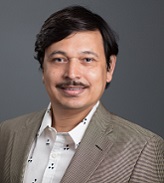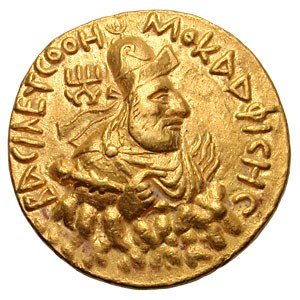Coins are perhaps one of the most important evidences for students of history. Numismatic evidence is truly the most accurate evidence that one can gather substantiating historical claims. This is especially critical as many other forms (contemporary literature written by court official) are often prone to exaggeration and might not provide precise information regarding extends of Kingdoms and dates. The names, the language they spoke and wrote, their beliefs, favorite attributes and how these kings looked in real life, including their fashion sense was almost entirely deciphered from their coins. Without the numismatic studies these rulers and dynasties would have been completely oblivious to historians. The best example is the Indo-Greeks and other nomadic kingdoms which existed prior to Kushan rule in Afghanistan and North-West India (modern Pakistan) from 3rd Cntury BC to 6th Century AD. Indeed, these coins acted as the `Rosetta stone’ for deciphering two languages, Kharoshti and Brahmi.
India has well studied history of 4000 years, which includes almost 2500 years of numismatic activity. The Indus valley civilization, the cities of it have been excavated in Sindh, Punjab, Gujrat and Rajasthan states, takes its rank among the ancient river valley civilizations of Egypt (Nile river) and Assyria & Babylonia (Euphrates and Tigris rivers). The excavations at Mohenjadaro and Harappa ruins clearly shows a sophisticated and complex society, which was prosperous because of its trade with other parts of India and also with other civilizations of Asia. More than 500 seals have been unearthed in these ruins, which are essentially made up of terracotta with fine representation of animal figures and pictorial writing, which is not yet deciphered. Two such seals of Harappa have been discovered in Mesopotamia (modern Iraq), leaving no doubt that these seals were used in connection with trade. Are these seals acted as the predecessors of coins? This remains to be proven, however, it was certainly beginning of the thought-process in that direction


